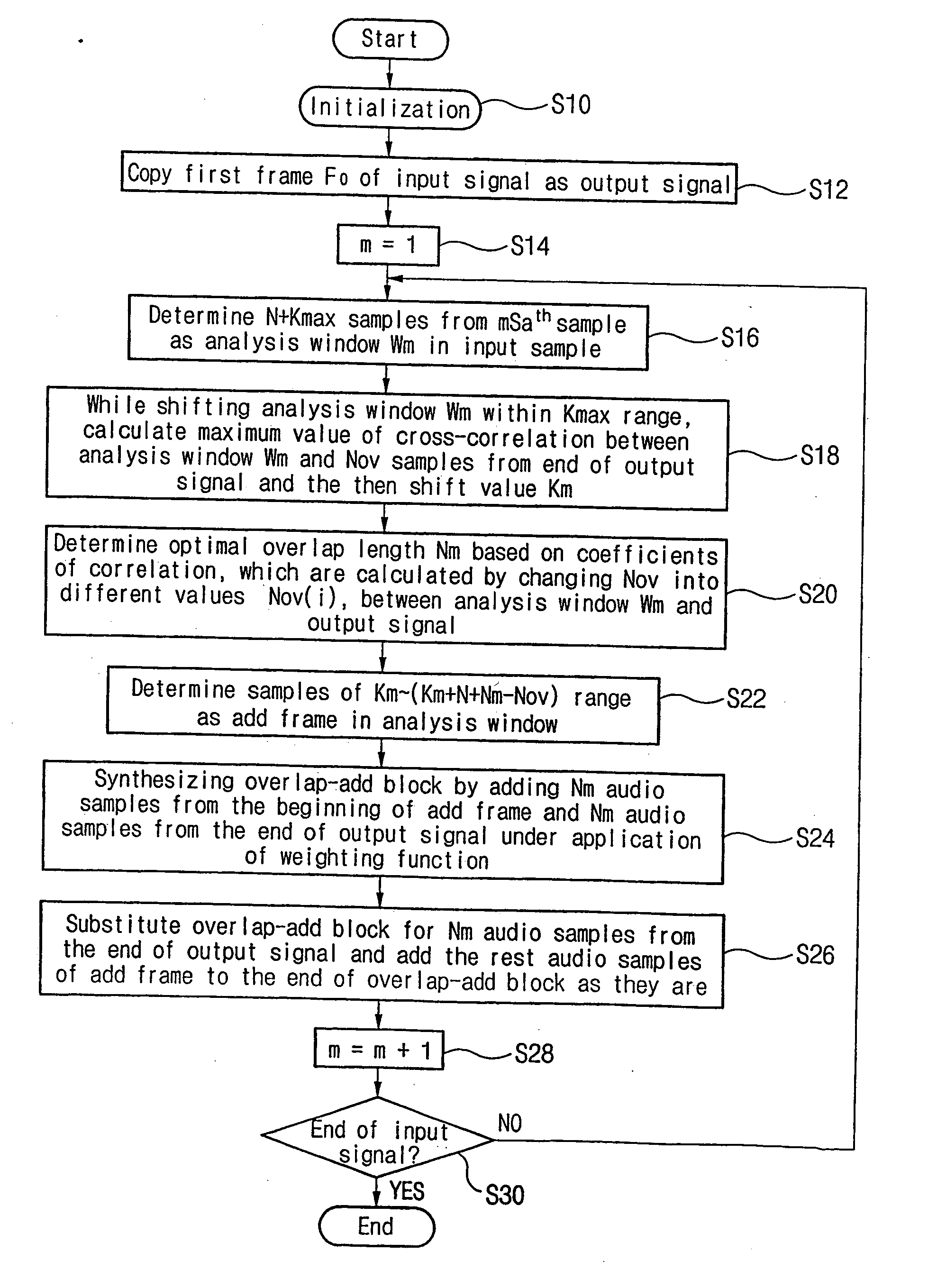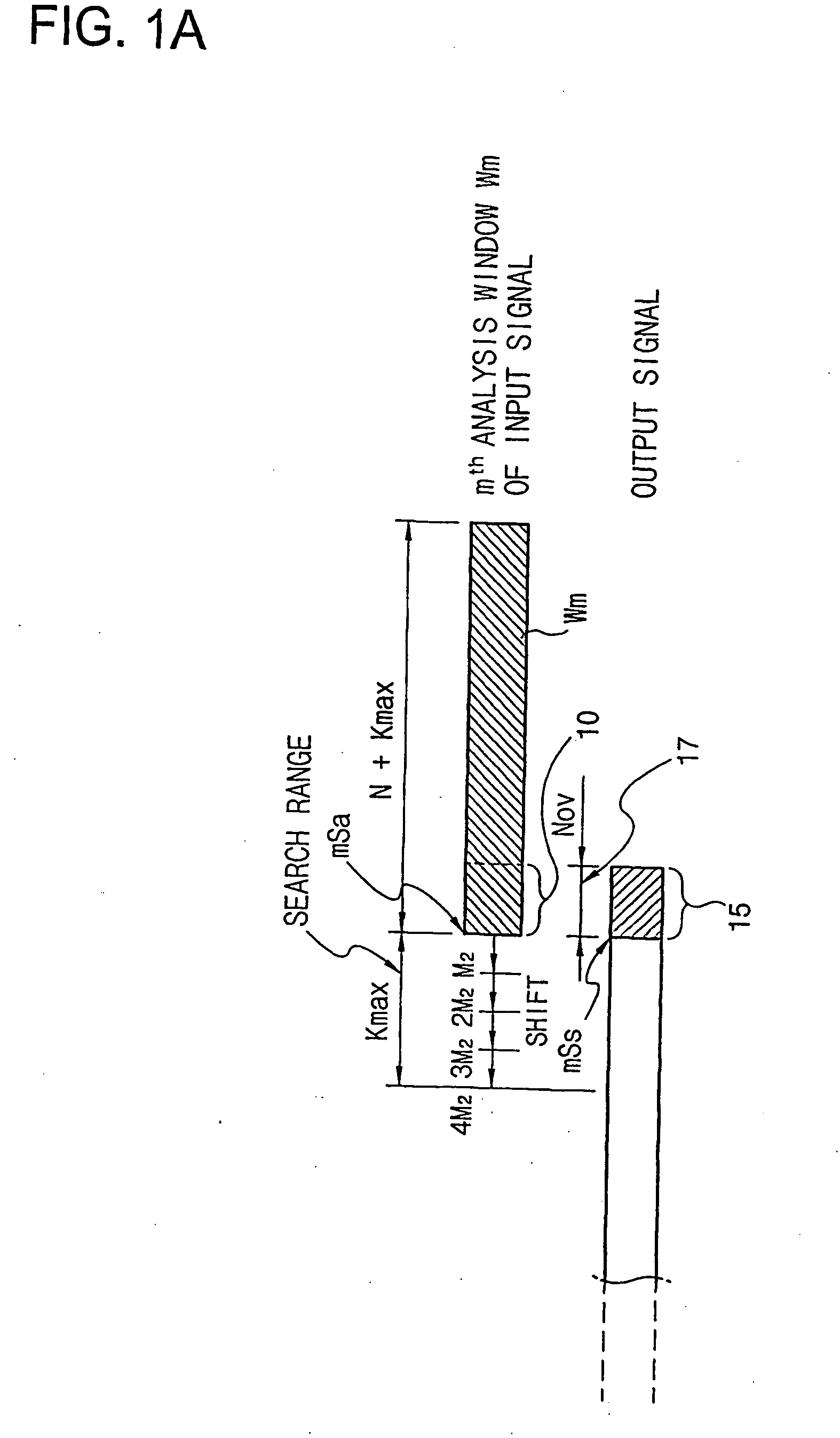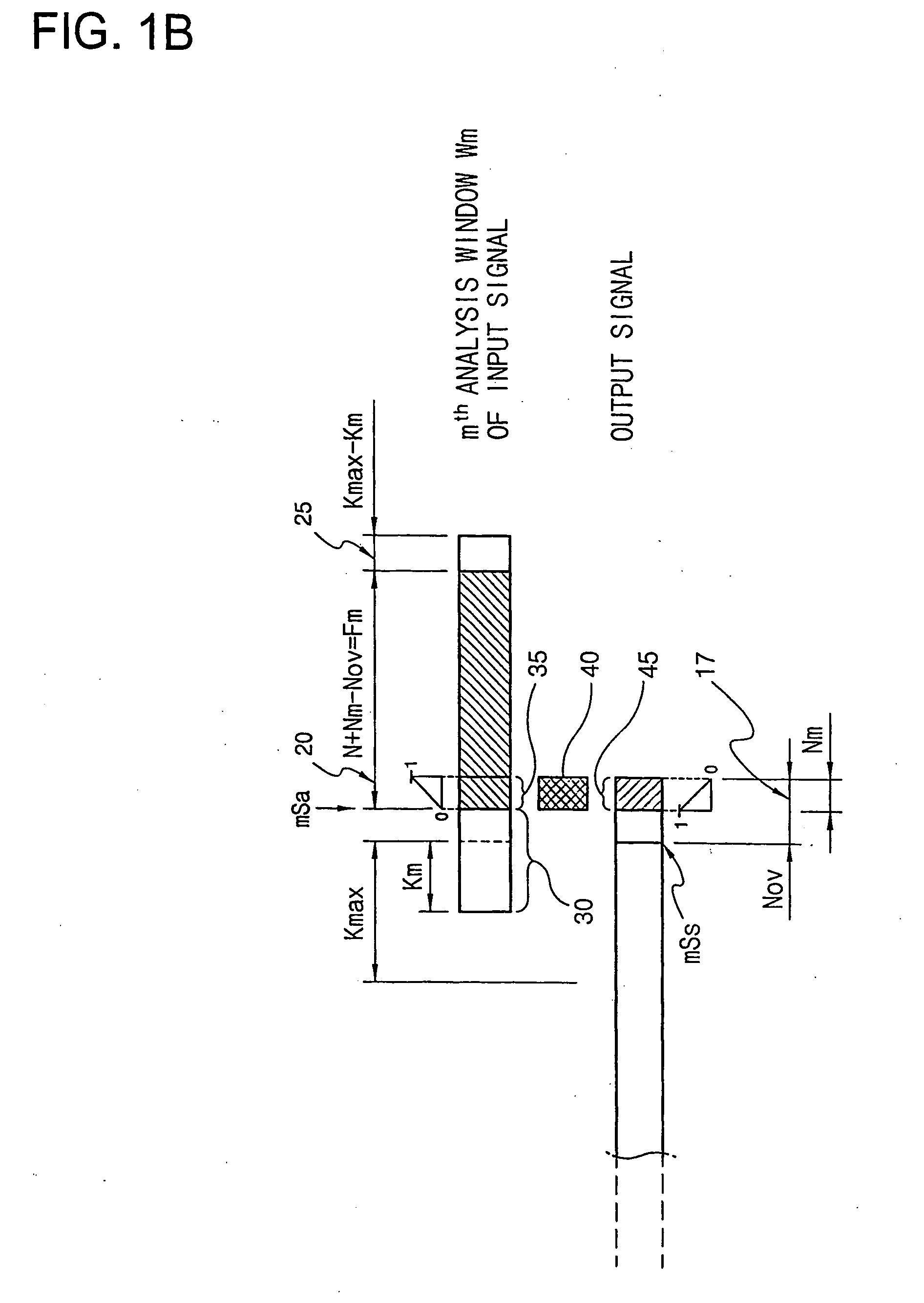Audio signal time-scale modification method using variable length synthesis and reduced cross-correlation computations
a time-scale modification and variable length technology, applied in the field of time-scale modification, can solve the problems of large amount of computation, unsuitable application field for real-time processing, and many implementation difficulties of methods, and achieve the effect of reducing the amount of computation
- Summary
- Abstract
- Description
- Claims
- Application Information
AI Technical Summary
Benefits of technology
Problems solved by technology
Method used
Image
Examples
Embodiment Construction
[0029] Hereinafter, the preferred embodiments of the present invention will be explained in detail with reference to the accompanying drawings.
[0030] An input signal means an original audio signal which is an object of TSM processing, and an output signal means an audio signal obtained from the TSM processing. The input signal is formed as a stream of sample signals obtained by sampling and quantizing an analog audio signal.
[0031] Various processing explained below is performed in a manner that makes an engine program based on the RCVS-TSM algorithm and then performs the engine program by a processor. Accordingly, an apparatus for performing the present invention as illustrated in FIG. 8 basically requires a non-volatile memory 84, such as ROM device for storing the engine program, a processor 80 for performing TSM processing of an input signal by reading the engine program to perform each command word in turn, and memory resources 82 for providing a data processing space of the p...
PUM
 Login to View More
Login to View More Abstract
Description
Claims
Application Information
 Login to View More
Login to View More - R&D
- Intellectual Property
- Life Sciences
- Materials
- Tech Scout
- Unparalleled Data Quality
- Higher Quality Content
- 60% Fewer Hallucinations
Browse by: Latest US Patents, China's latest patents, Technical Efficacy Thesaurus, Application Domain, Technology Topic, Popular Technical Reports.
© 2025 PatSnap. All rights reserved.Legal|Privacy policy|Modern Slavery Act Transparency Statement|Sitemap|About US| Contact US: help@patsnap.com



